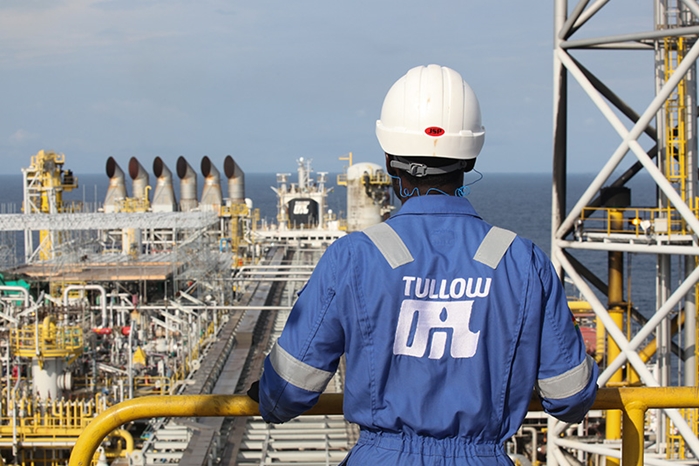Tullow Oil plc (Tullow), the independent oil and gas exploration and production group, has announced its full-year results for the year ended 31 December 2017.
Mark MacFarlane, Executive Vice President for East Africa, commented:
The South Lokichar basin appraisal programme has confirmed material oil resources to support substantial oil production and an export pipeline to the Kenyan coast pending a Final Investment Decision (FID) which is planned for 2019. The proposed development plan reflects the Partnership’s desire to sanction the project in a manner that is commercially robust, ensures the earliest possible FID and First Oil and supports the required infrastructure given the location of the South Lokichar basin some 750 km from the Kenyan coast.
Appraisal campaign and resource estimates
A total of 21 appraisal wells have been drilled in the South Lokichar basin. Tullow has also conducted extended well tests, water injection tests, well interference tests and water-flood trials, all of which have proved invaluable for planning the development of the oil fields. The appraisal campaign has firmed up the Group’s resource estimates and improved Tullow’s understanding of the subsurface at the key producing fields.
Tullow has conducted a full assessment of all exploration and appraisal data and estimated that South Lokichar basin contains the following recoverable resources: 240 – 560 – 1,230 million barrels of oil (mmbo) (1C-2C-3C) from the overall discovered stock-tank oil initially in place (STOIIP) of up to 4 billion barrels. This estimate of recoverable resources is consistent with previous guidance provided during the exploration and appraisal phase (Pmean of 750 mmbo). The additional remaining conventional undrilled prospect inventory of the basin is approximately 230 mmbo risked mean recoverable, not including further potential in tight-oil plays in the future.
Development
Tullow and its Joint Venture Partners have proposed to the Government of Kenya (GoK) that the Amosing and Ngamia fields should be developed as the Foundation Stage of the South Lokichar development. This stage would include 60,000 to 80,000 barrels of oil per day (bopd), Central Processing Facility (CPF), and an export pipeline to Lamu. This approach brings significant benefits as it enables an early FID of the Amosing and Ngamia fields taking full advantage of the current low-cost environment for both the field and infrastructure development and provides the best opportunity to deliver First Oil in a timeline that meets the GoK’s expectations. The installed infrastructure from this initial phase can then be utilised for the optimisation of the remaining South Lokichar oil fields, allowing the incremental development of these fields to be completed at a lower unit cost post-First Oil.
The Foundation Stage is currently planned to involve an initial 210 wells through 18 well pads at Ngamia and 70 wells through seven well pads at Amosing. This stage will target volumes of around 210 mmbo of the total estimated 2C resources of 560 mmbo and a plateau rate of 60,000 to 80,000 bopd. The incremental development of the remaining 2C resources and the significant upside potential is expected to increase plateau production to 100,000 bopd or greater. It is anticipated that the FEED and baseline Environmental and Social Impact Assessments (ESIA) for the foundation development will commence in the second quarter of 2018, with FID targeted for 2019 and First Oil for 2021/22. Total gross capex associated with the Foundation Stage is expected to be $2.9 billion, of which $1.8 billion is an investment in the upstream and $1.1 billion is for the pipeline.
Tullow and its Joint Venture Partners, following the extended election period, have re-engaged with representatives of the Government of Kenya on the overall approach and timelines for development progression.
Early Oil Pilot Scheme (EOPS)
The EOPS Agreement between the Joint Venture Partners and the Government of Kenya was signed on 14 March 2017 allowing all EOPS upstream contracts to be awarded. Initial injectivity testing has started at Ngamia-11 and oil production and water injection facilities are being constructed in the field ready to commence production/injection in the first quarter of 2018. Oil produced is being initially stored until all necessary consents and approvals are granted and work is completed for the transfer of crude oil to Mombasa by road.



